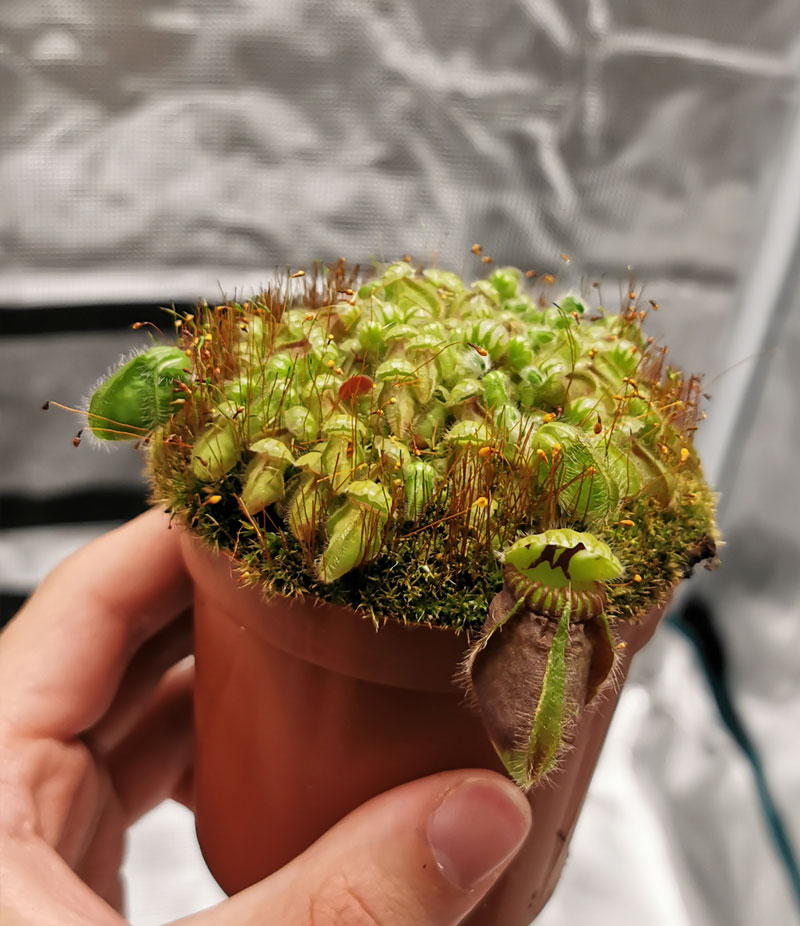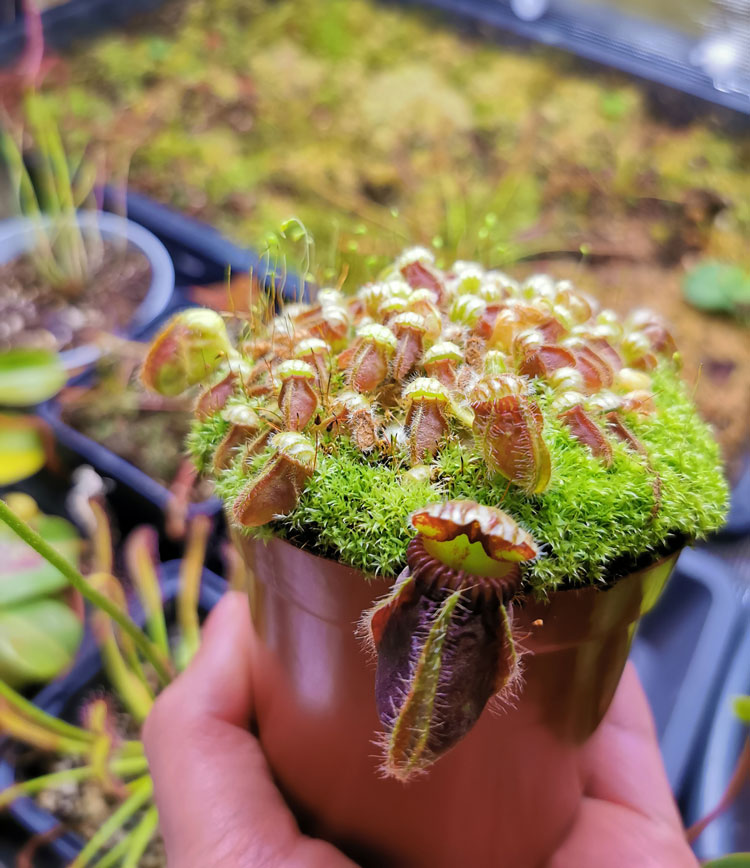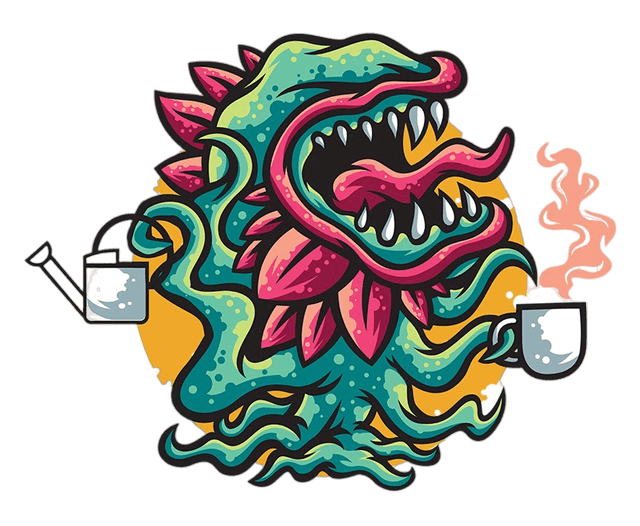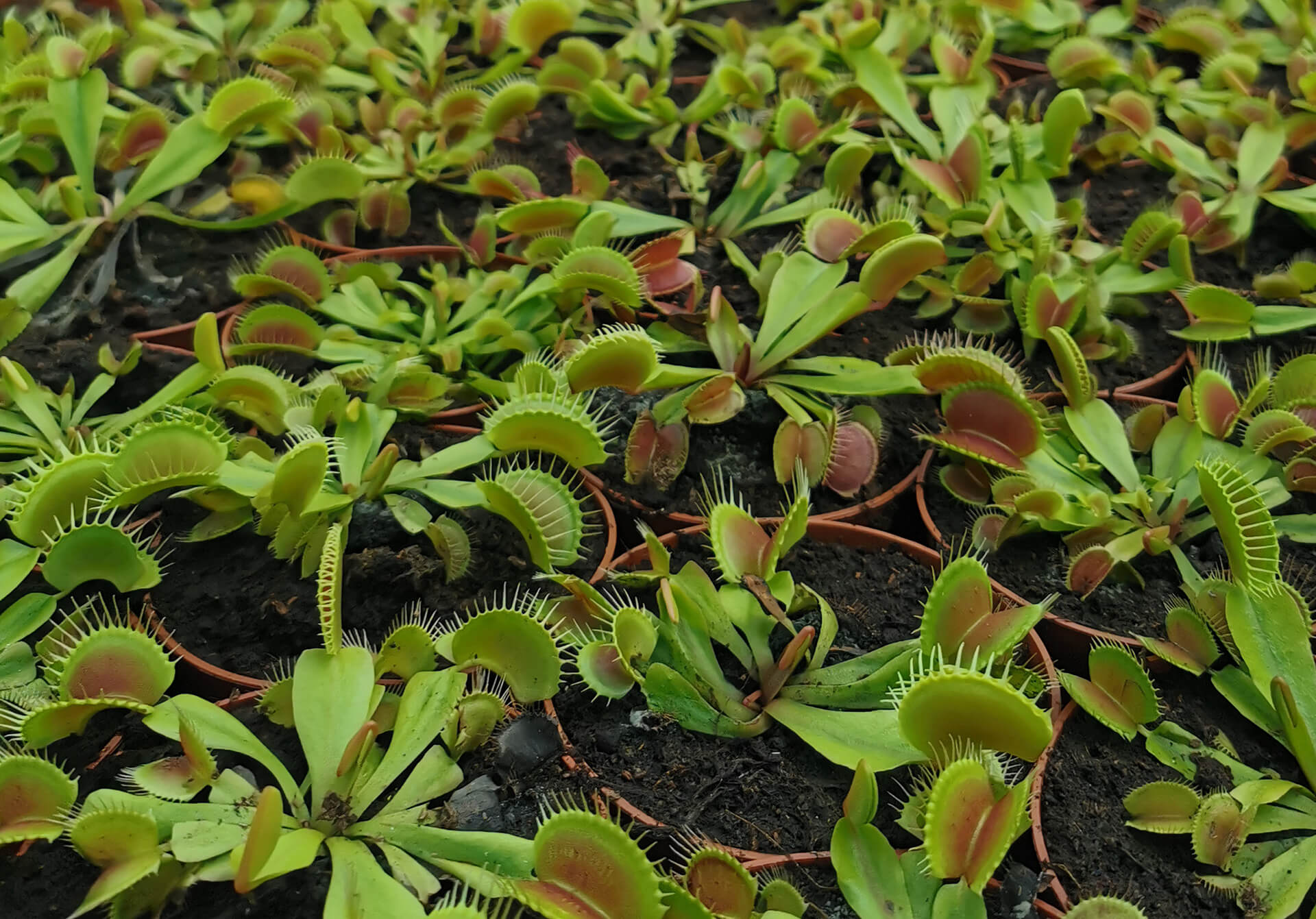How to Care for Carnivorous Plants?
Carnivorous plants growing guide
Carnivorous plants are not easy to cultivate as indoor plants and you should know about the respective requirements of the different species. The most important parameters in terms of keeping and care are air humidity, nutrient requirements, light and temperature.
Location & light
The light factor plays an important role. The majority of the carnivorous plant species require a lot of light, so it is important to have as bright a place in the house as possible. However, some species do not like direct midday sun. An additional electric light source may be necessary. The reason for the high light requirement is the natural habitat of the plants, which with their hostile conditions hardly allow any other shade-casting vegetation. The factor light is so relevant for the plants that their complete growth can change. Most plants form a larger leaf surface and become brighter if there is too little light. Some even stop forming the typical traps when there is a lack of light and instead produce long shoots and leaves to get the necessary light. So always pay attention to the individual light requirements of your carnivorous plant and take changes in color and growth seriously.
As you can see in the pictures, most carnivorous plants change color when they are under additional light.


A window facing south with plenty of natural light is a good location for most carnivores. If you are cultivating plants that do not hibernate (for example Nepenthes or Heliamphora), you should provide sufficient light, especially in winter. This is hardly possible by natural means, which is why artificial light is often necessary. You should set up the light source so that the daylight phase is artificially prolonged. Start the light supply when the sun is already losing power due to the low position. This is usually the case in the afternoon from around 4 pm. Extend the light period until about 19 or 20 o’clock. In principle, all plant lights with high-pressure sodium vapor lamps or suitable LED lamps, which are available in different power ranges, are suitable as light sources. If you match the light to the needs of your plants when you buy it, there should be no problems with the light supply.
Species and their light requirements:
Half-shade and normal daylight: Lowland Nepenthes, Drosera and some species of Pinguicula.
Moderately sunny and normal daylight: Highland Nepenthes, Genlisea, Aldrovanda, Pygmy Drosera and some Pinguicula and Utricularia
Sunny and normal daylight: Darlingtonia, Cephalotus and Drosera
Sunny and lots of light: Sarracenia, Dionaea, Byblis und Heliamphora
Sunny and very much light: Drosophyllum and Roridula
Humidity
Pitcher plants (Nepenthes) in particular require consistently high humidity. This is due to their natural habitats (for example, cloud forests at high altitudes). A humidity of 60 percent is the absolute minimum here and depending on the species, a humidity of 80 to 100 percent may be necessary for successful cultivation. This is not possible in an open pot keeping, which is why these plants are mostly kept in terrariums or greenhouses. Venus flytraps (Dionaea) and Sundew (Drosera) can be kept at lower humidity, but here the minimum should not fall below 40 to 50 percent either. This can become a major problem, especially in winter, when the humidity drops to 20 percent or less when the heating air is dry.
To achieve the required values, as already mentioned, culture in a closed terrarium is a good option. However, the further requirements of the plants and their later size have to be considered. Even better is a greenhouse with ventilation and not too much sunlight. For example, bug plants (Roridula) are unsuitable for terrariums, as they need moving air and without it, they will die quickly. A water bowl filled with expanded clay, in which the actual plant pot is placed, can also contribute to a higher air humidity through evaporation. A fogger, which transforms water into a fine mist via ultrasound, can also help. In principle, it is worthwhile to purchase a hygrometer, with which the humidity in the room or in the closed terrarium can be kept under close observation. If dry heating air lowers the air humidity in winter, this can be problematic for carnivorous plants.
Nutrient requirements
Carnivores need a nutrient-poor substrate and equally nutrient-poor (especially lime-poor!) watering water. You should avoid mineral fertilizers completely. Normal potting soil and tap water are generally not tolerated by carnivorous plants. Use Sphagnum Moss or even better special carnivore soil. The latter usually consists of an unfertilized mixture of white peat and lime-free sand. Distilled water or rainwater is suitable for watering. In the case of a terrarium planting, the use of expanded clay as drainage is recommended to prevent water logging in the root area. If you have fallen in love with a plant that has even more specific substrate requirements, further fine-tuning may be necessary – however, most carnivores should be able to be cultivated successfully with this soil.
Should I feed my carnivorous plant?
Active feeding is not necessary with carnivorous plants. In most cases suitable flying insects such as fruit flies or fungus gnats live in the house anyway and eventually end up in the trap. Nevertheless, you can also help here, for example to observe the catching effect live. It is only important that you do not overdo it. The plants usually get along quite well with a minimum of animal food. Especially Venus flytraps can open and close a leaf only five times before it dies. With larger prey it can even happen that it dies during or immediately after the first decomposition.
Dormancy for carnivorous plants
Some carnivores like the Venus flytrap need a winter break to regenerate. The winter quarters should continue to be bright, but significantly cooler with temperatures between 40 and 50 degrees Fahrenheit (ca. 5-10 °C). If you do not have a greenhouse or similar, you can winter the carnivorous plant in the unheated stairwell or in the attic directly under the skylight. But make sure that it is not exposed to too cold a draft. It also needs less water, just make sure that the root ball remains moist and avoid water logging. Ideally, you have provided a drainage layer and/or a permeable substrate and a pot with a drainage hole. In late spring the plant can then be accustomed to warmer temperatures and should sprout again quickly and vigorously.

